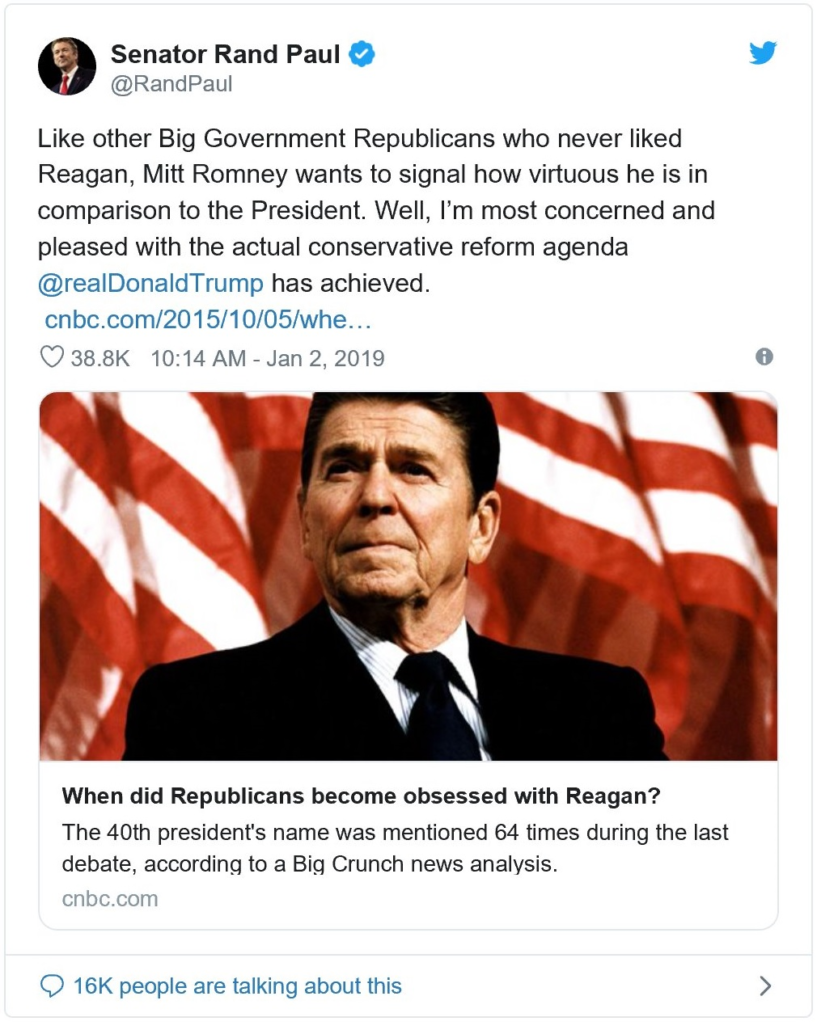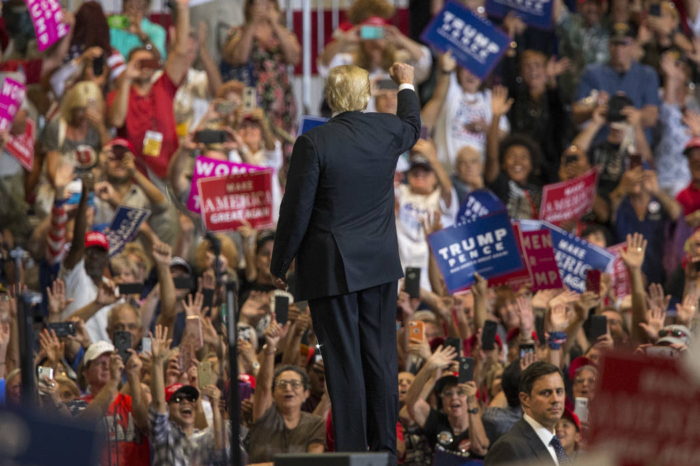“Those who would give up essential Liberty, to purchase a little temporary Safety, deserve neither Liberty nor Safety.” – Benjamin Franklin
On December 10, 2018, the Department of Justice published its final rule regarding a bump stock ban in the United States. (The rule can be found at the The Federalist Pages Library section, along with the NRA’s comments on the proposed rule.) The DOJ arrived at this prohibition by holding that bump stocks are machine guns under the definitions of such weapons contained in 27 C.F.R. §§ 447.11, 478.11, and 479.11. But even if DOJ were to have the authority to enact this regulation, the rule would serve only to further threaten American citizens with excessive regulatory restraints while not having a chance at achieving its stated purpose.
A constitutional government of enumerated powers ought not pass any law that falls outside the ambit of those authorities given to it, nor those that do not serve to improve society. As such, even if we decide that a government is authorized to pass a law, that authorization is nullified by the futility of the act. Such is the case here.
First, Congress is arguably entitled to pass a bump stock ban under the Second Amendment.
A valid argument can be made that Congress possesses the authority under the Constitution to pass a bump stock ban. Although some argue the Second Amendment to the Constitution prohibits Congress from banning bump stocks, in point of fact, a stronger argument holds that such a prohibition does not apply to firearm accessories, which bump stocks clearly are.
In banning bump stocks, the DOJ claims it is merely interpreting the definitions of “machine gun” contained in 27 C.F.R. §§ 447.11, 478.11, and 479.11. Because it does not include a provision addressing parts of a machine gun, 27 C.F.R. § 447.11 could not be construed to include a bump stock, but 27 C.F.R. §§ 478.11 & 479.11 do. They define a machine gun as “any weapon, which shoots, is designed to shoot, or can be readily restored to shoot, automatically more than one shot, without manual reloading, by a single function of the trigger. The term shall also include the frame or receiver of any such weapon, any part designed and intended solely and exclusively, or combination of parts designed and intended, for use in converting a weapon into a machine gun, and any combination of parts from which a machine gun can be assembled if such parts are in the possession or under control of a person.”
Clearly, bump stocks may not be included within the first part of the definitions of “machine gun,” but bump stocks are designed solely and exclusively for use in converting a weapon into a machine gun.
Of course, there is an inconsistency in using the term machine gun within the definition of machine gun, as doing so implies that what is being described is not a machine gun, but something else — which is then modified to act as a machine gun. As we shall see, the flawed design of the machine gun definition brings up some legal difficulties.
Because it could reasonably be argued that Congress intended to include bump stocks within its definition of machine gun, which would mean the Bureau of Alcohol, Tobacco, Firearms, and Explosives would have the authority to regulate them, and DOJ would have the congressional authority to ban them.
But oddly, by calling a bump stock a machine gun, DOJ opens the door to Second Amendment jurisdiction. Governments have argued their authorities to regulate magazines, bullets, and other firearm attachments are not subject to Second Amendment restrictions because these are not “arms” as referenced in the Second Amendment, but rather accessories to arms.
However, in order to avail itself of the congressional authority to regulate bump stocks, DOJ has found it necessary to call bump stocks machine guns, which are firearms, thus opening the door to Second Amendment challenges.
Even if the judiciary takes up the charge of considering bump stocks machine guns in the full sense of the word, the question of whether it would find that regulating bump stocks runs afoul of the Second Amendment is a separate matter.
Interestingly, it was not until the District of Columbia v. Heller case of 2008 that the Supreme Court defined those weapons protected by the Second Amendment. Here, the Court ruled that it was weapons “in common use,” that were protected. Although little question exists that bump stocks are “in common use,” the Court also reminded us that Congress could ban “dangerous and unusual weapons.”
Notice, the phrase is not dangerous or unusual, but dangerous and unusual, forcing the government to show that bump stocks are both if it were to defend its authority to prohibit them. What the courts would rule if it would accept the invitation to consider bump stocks as actual firearms rather than accessories remains to be seen.
Countering this position is the lack of meaningful uses for bump stocks, which are used to increase the speed with which a weapon is fired, but most gun experts say that bump stocks are worthless items that only serve to diminish the accuracy of the weapon, and they are not advocated for use in hunting, or even as a valid enhancement to one’s self-defense. As such, it would be a very easy bar for the advocate to clear in arguing the superfluousness of such items and therefore, the lack of any meaningful intrusion on individual liberties in banning them.
One could also argue that a bump stock is not a machine gun. This is inherently true, of course, as a bump stock could not, by itself, fire a bullet. If a bump stock is not a machine gun, then DOJ’s reliance on 27 C.F.R. §§ 478.11 & 479.11 would get thrown out as nonsensical. Frankly speaking, such would be the honest assessment and the most appropriate outcome of a true evaluation of the language of the governing statutes.
However, it is equally clear that Congress, despite the grammatical impossibility of its definition, intended to include articles such as bump stocks in its regulatory scheme. A court would likely stick to the intent of the statute rather than engage in wordplay on such a politically charged issue. Of course, should the court decide not to make an issue of the incongruity of the definition of machine gun, it would immediately force itself to address the Second Amendment issues noted above; an inescapable Hobson’s choice
Is Congress’s ban prohibited by the broader Constitution?
There is yet another, more fundamental argument to be made against the validity of a congressional ban: it might not be allowed by the Constitution itself. Until now, our constitutional considerations have centered on whether Congress may ban bump stocks under the Second Amendment. Indeed, the greater question is whether Congress was ever given the authority to do so under the broader Constitution.
The federal government is one of enumerated powers. If a power employed by Congress in passing a law is not contained in Article I, Section 8 of the Constitution; it cannot possess the authority to enact it, and there is no provision in the Constitution allowing Congress to ban bump stocks. Even the interstate commerce clause would not allow Congress to ban it.
That Congress was not given the authority in Article I to ban items is a well-founded contention as the Framers did not intend to create a federal government that could ban such things, leaving it to the states to do so instead. To be sure, the Article I powers contained in the Constitution have been expanded by the interstate commerce clause, but even if the interstate commerce clause were to be employed in Congress’s defense of regulating bump stocks, such powers would allow Congress to prohibit the interstate transport and sale of such items, not their intrastate possession.
Sadly, though, the train allowing Congress to intrude in such intrastate activities has long since left the station and delivering such an argument before a federal magistrate would be met with nothing other than hostility.
In the most practical sense, regulating bump stocks would likely not help.
Despite these valid arguments, many of which are addressed in DOJ’s final rule announcement, the most basic argument against banning bump stock lies in its futility. Recall that according to the legal theory leading to the creation of our government, the burden is upon the authorities to show that the rule or law passed is within the ambit of its authorities and purposeful in addressing a societal problem.
Assuming appropriate authority — which we questioned above — would banning bump stocks help solve a societal problem?
The discussion about banning bump stocks was brought back to the forefront of the nation’s political discussion after the horrible massacre of 2017 in Las Vegas. There, bump stocks were used to convert semiautomatic weapons to automatics and spray over 1,100 rounds from the 43d floor of a hotel onto concert goers assembled across the street. Fifty-eight people were killed that night and another 851 were injured, 422 from gunshot wounds.
Immediately, gun control advocates, knowing that they would not easily be able to ban semiautomatic weapons, focused their attention on bump stocks. Although bump stocks were not employed in the February 14, 2018, Parkland shooting, that massacre reinvigorated the call for a ban, one that President Trump adopted. By March 2018, DOJ had published its proposed rule.
But such a ban will not have any effect on preventing or lessening these massacres.
First, massacres can and often do take place without the use of semiautomatic weapon converters. Not only did the Parkland shooter not employ bump stocks, but also the later massacre in a California nightclub where 13 were killed was carried out with great effectiveness with a handheld semiautomatic. Similarly, the Pulse Club shooting in Orlando that killed 49 people did not include bump stocks.
Federal authorities do not know how many bump stocks exist in the United States although DOJ estimates that there are anywhere between 280,000 and 520,000 in circulation. There is no record of who owns these accessories, making it impossible for DOJ to chase them down. Additionally, the rule relies primarily on the voluntary destruction of bump stocks to remove them from circulation. Here, we can learn from the experiences of the few states that have passed bump stock bans. In New Jersey, its bump stock return program has produced exactly zero bump stocks to authorities. And in Massachusetts, its program has delivered three.
Moreover, a semiautomatic rifle can be converted to fire automatically by using as many methods as imaginative minds can conjure, making conversion a relatively simple affair, bump stock or not.
Even Jeremy Stein, the President of Connecticut Against Gun Violence and coauthor of the Connecticut bump stock bill called the legislation ineffective at solving gun violence problems and said the effort at banning bump stocks was “symbolic.” In addition, The Wall Street Journal said enforcement would be “a challenge.”
So the strongest argument in favor of passing anti-bump stock legislation is the invalid symbolism contention and the argument against it is the indisputable futility charge, and possible unconstitutionality.
But the rule gets enacted anyway, which brings us to the heart of the issue. Government should not be engaged in the practice of knowingly passing ineffective legislation, and we the people should not be allowing it to do so.
Yet, they do; and we do. And therein lies the crux of our problem.
EDITORS NOTE: This column originally appeared in The Revolutionary Act. The featured photo is by Anthony Garand on Unsplash.
























